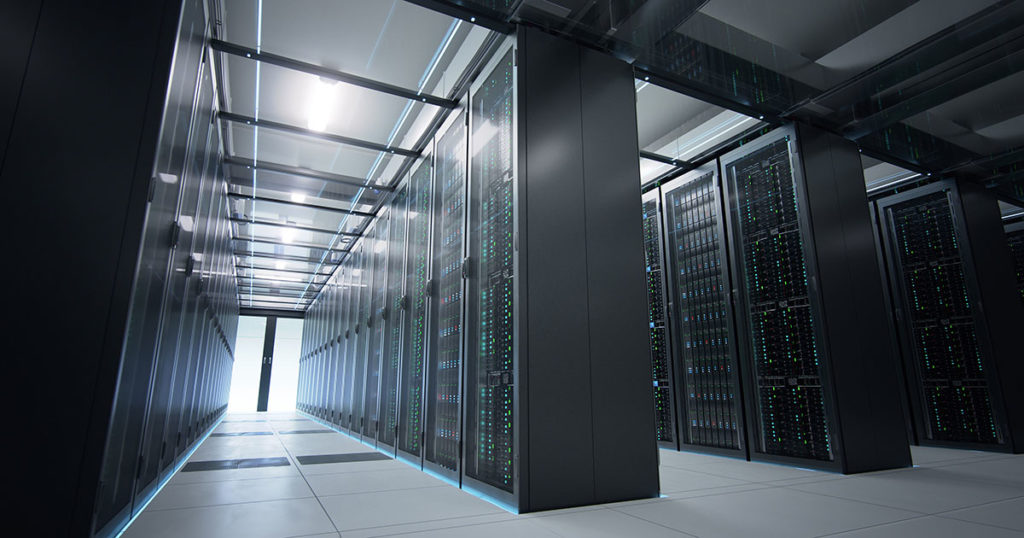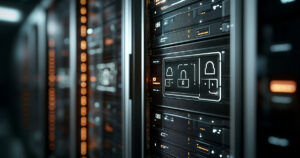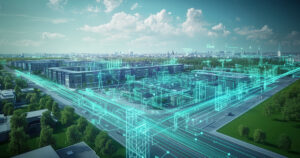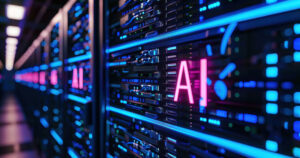DCIM - Data Center Infrastructure Management
Understanding DCIM: Essential Insights for Data Center Management

Why is DCIM Important?
Work faster, increase revenue, improve utilization and provide service differentiation
Over the last several years, companies looking to reduce data center operating costs, or avoid costly expansions of existing facilities, have considered using Colocation as a viable option for reducing operating expenditures and capital expenditures costs associated with operating an in-house data center. This rise in popularity has created higher levels of competition between Colocation operators to onboard new customers quicker and keep them longer, through the use of value-added services.
Data Center Infrastructure Management (DCIM), empowers colocation operators to better manage their facilities by consolidating all the information needed to make smarter, faster decisions for infrastructure planning and the day-to-day management of hosted equipment. DCIM solutions like OpenData collect real-time data from facility infrastructure and IT equipment, providing operational insight into resource capacity planning as new customers are added (or deleted) and have the ability to share this management information with customers as a value-added service.
With DCIM, colocation operators can transform their business by having the information they need to work faster, increase revenue, improve utilization and provide service differentiation to their customers — while reducing the risk of unplanned downtime from increased density.
Download the White Paper:
Top 5 Reasons Colocation Providers Need DCIM
The Best Data Center Infrastructure Management Platform
OpenData from Modius delivers complete operational intelligence based on real-time data for superior management of data centers and facilities. OpenData is a highly scalable IoT software platform designed to collect the unstructured “big data” that is generated from all the infrastructure, sensors, applications, and IT equipment found in today’s modern data centers and facilities. We use this real-time data to enable smarter management decisions, reduce operational risks and provide a superior solution for Data Center Infrastructure Management, (DCIM).
How Modius DCIM Works
Whether your organization is a colocation provider, a managed service provider, an application cloud-based service provider, or all of the above, the need for complete and accurate visibility into infrastructure is the key to successfully managing costs, capacity and availability. Because DCIM solutions like OpenData provide real-time data collection and analytics for intelligent capacity planning, all types of service providers can benefit. DCIM makes it possible to optimize the profits derived from your facilities by identifying and freeing stranded capacity, increasing the productivity of your service staff, and insuring that all your SLAs are achieved.
What is DCIM Software?
Software for Data Center Infrastructure Management
Data Center Infrastructure Management (DCIM)1 software gives data center operators the ability to run efficient data center operations. DCIM software is used to monitor, measure, and manage data centers, covering both IT equipment and supporting infrastructure such as power and cooling systems. DCIM software can bridge information across organizational domains – Data Center Ops, Facilities, and IT to maximize utilization of the data center.
What are DCIM Advantages and Benefits?
Advantages
- Faster Customer On-boarding
- Faster MTTD and MTTR times for problem resolution
- Superior capacity planning and resource management
- More flexible billing options
- Customer visibility for collocated equipment
Benefits
- More revenue at a faster pace
- Less downtime and SLA compliance
- Provides resource optimization and lower operating costs
- Provides a competitive advantage over other colocation operators not offering DCIM
How DCIM works
- Data Center power and cooling infrastructure is identified and OpenData device templates are used to pull the appropriate data points from each device being monitored
- Collector software is configured to combine data points into useful power generation and consumption metrics, normalize data and set performance monitoring thresholds
- Collector software polls data from the power and cooling equipment in real-time and passes it back to the OpenData application for storage in the central database
- Colocation operator loads CAD drawings of floor, rooms, cages and facility infrastructure into OpenData creating a virtual data center for build-out planning and on-boarding new customers
- Colocation customers can use OpenData to manage their equipment (alarms and events, moves, adds, and changes, etc.)
- Power consumption data can be used to offer measured power billing to customers
- Performance data collected by OpenData can be used to verify service level agreement (SLA) compliance
Top Features of DCIM Software
- A comprehensive library of device templates for all data center equipment manufacturers (infrastructure and IT)
- Single repository of all assets across multiple data centers
- Complete visualization of data center floors and racks
- Virtual modeling of moves, adds, changes (MAC) initiatives
- Space reservations for future projects (customer on-boarding)
- Visualization and documentation of power and network cabling
- Advanced search capabilities to locate assets or identify available capacity
- User level security to restrict access to data and functionality (customer portal)
- Designed to support easy integration with other applications (billing)
FAQ: DCIM Explained
What is DCIM?
DCIM (Data Center Infrastructure Management) is a system of tools and processes that help monitor, manage, and optimize data center operations, including power, cooling, and assets.
Why is DCIM important in modern data centers?
DCIM improves visibility, increases uptime, reduces energy costs, and enables better capacity planning through real-time monitoring and data-driven insights.
What features should I look for in a DCIM solution?
Key features include asset tracking, environmental monitoring, power usage tracking, real-time alerts, reporting dashboards, and integration with ITSM or BMS systems.
How does DCIM differ from traditional monitoring tools?
Traditional tools often focus on IT or facilities in isolation, while DCIM provides an integrated view of both, enabling holistic management of the entire infrastructure stack.
Can DCIM help reduce energy consumption?
Yes. By tracking power usage and environmental conditions, DCIM helps identify inefficiencies and opportunities to reduce energy waste, leading to cost savings.
Is DCIM suitable for small data centers?
Absolutely. DCIM solutions can scale and provide valuable insights for small and medium-sized data centers, not just large enterprise facilities.
How long does it take to implement a DCIM system?
Implementation timelines vary by complexity but can range from a few weeks for basic deployments to several months for full-scale integrations across multiple sites.
What makes Modius DCIM different from other platforms?
Modius offers a real-time, vendor-agnostic DCIM platform that focuses on live operational intelligence, easy integration, and scalability for hybrid environments.
What is PUE, and how does DCIM help improve it?
PUE (Power Usage Effectiveness) is a metric that compares total facility power to IT equipment power. DCIM tools track and optimize PUE by identifying power inefficiencies and enabling better energy management.
How does DCIM improve data center security?
DCIM enhances physical security by monitoring access points, tracking device movements, and integrating with surveillance or access control systems.
What are the cost-saving benefits of DCIM?
By optimizing energy usage, reducing downtime, improving space utilization, and lowering operational risks, DCIM delivers measurable ROI.
For more information on OpenData’s top 5 reasons colocation operators need DCIM capabilities
Latest on DCIM technology from Modius

Smarter Asset Management for Modern Data Centers
Managing assets across a data center is more complex than ever. From tracking devices to modeling lifecycle data, operators need tools that give them full

Mastering Next-Generation DCIM: Why Modius OpenData is the Future of Real-Time Infrastructure Management
In today’s fast-paced, interconnected world, managing critical infrastructure effectively is more than a necessity—it’s a competitive advantage. As data centers and critical facilities grow in

How Predictive Analytics Is Changing Data Center Management with DCIM
In the world of Data Center Infrastructure Management (DCIM), staying ahead of infrastructure issues is no longer optional. It’s essential. As demand for uptime, efficiency,

How to Monitor AI Racks: Why Seconds Matter in Data Center Management
AI infrastructure is powerful, dense, and demanding. At the heart of this revolution are AI racks, specialized hardware systems packed with high-performance GPUs, custom power
